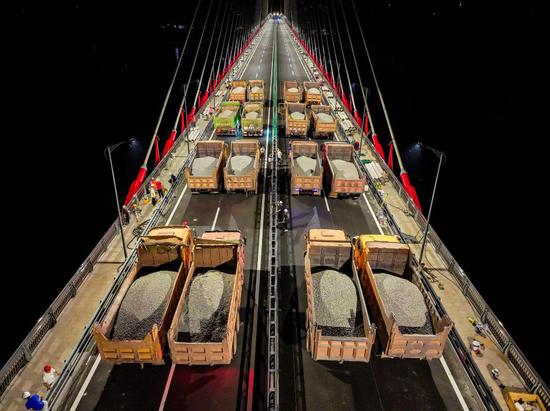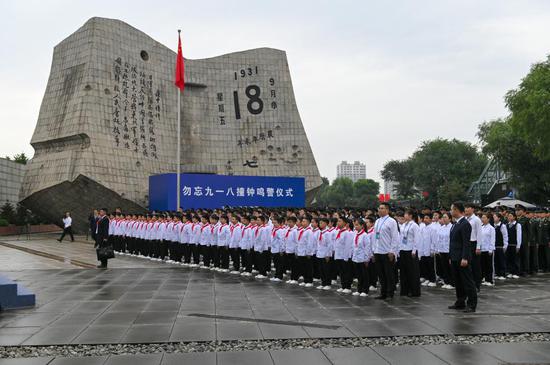
(Zhao Zhongxian)
Since the discovery of superconductivity in 1911, scientists have been pursuing answers to two key questions: finding superconducting materials with higher critical temperatures that are more suitable for applications, and understanding the underlying mechanisms of superconductivity.
For the past 50 years, Zhao Zhongxian, physicist and academician of the Chinese Academy of Sciences, has dedicated himself to the study of superconducting materials. Leading his team in the global superconductivity race for decades, Zhao achieved two significant milestones.
One is discovering high-temperature superconducting materials in the 1980s and the other is synthesizing iron-based superconductors with critical temperatures above 50 K or — 223 C, in 2008. These achievements have propelled China's high-temperature superconductivity research to the forefront of the international stage.
As it approaches the 75th anniversary of the founding of the People's Republic of China, Zhao was awarded the national honorary title of"People's Scientist" this month. This is the highest honor in China given to distinguished individuals who have made significant contributions and earned high reputations in various fields such as economy, defense, diplomacy and education.
Superconductivity refers to the phenomenon where certain materials exhibit zero electrical resistance when cooled to a certain temperature. In other words, achieving a superconducting state requires an extremely low-temperature environment.
Experts from the Institute of Physics at the CAS explain that low temperatures in physical research are typically achieved using liquid helium and liquid nitrogen. Liquid nitrogen can only cool down to 77 K or — 196 C, so for superconductors with critical temperatures below that, the much more expensive liquid helium must be used. This is why finding superconductors with higher critical temperatures has been a global research focus for physicists.
In the 1960s, US physicist William L. McMillan calculated that the highest possible superconducting critical temperature was unlikely to exceed 40 K. His calculations were widely accepted by the international academic community, and 40 K became known as the "McMillan limit".
However, Zhao and a few other international scientists challenged this view. In 1977, Zhao published a paper suggesting that the critical temperature could reach 40-55 K, and that complex structures and new mechanisms could potentially push it to 80 K in certain cases.
In 1986, the first report of superconductivity at 35 K was made by European scientists J. Georg Bednorz and Alexander Muller, supporting Zhao's theory. They won the Nobel Prize for the achievement later.
By the end of that year, Zhao's team surpassed the McMillan limit, discovering high-temperature superconductors above 40 K, with some even showing signs of superconductivity at 70 K.
"For a time, the global physics community was shaken, and the collapse of traditional theories brought'Beijing's Zhao' into the spotlight of renowned international physics journals," Zhang Xiaotian of the Yangtze River Delta Physics Research Center said.
At that time, Zhao faced international skepticism because no other teams had achieved similar high-temperature superconductivity. Amid the doubts, Zhao and his team realized that their experimental samples, made from alloys produced by a factory that had been state-owned in 1956, contained impurities, which might have played a role.
Inspired by this, they began to intentionally introduce impurities. After more than a month of countless experiments and adjustments, on the night of Feb 19, 1987, in a modest laboratory at the Institute of Physics, Zhao and his team finally developed the first superconducting material with a critical temperature of 93 K. Five days later, they announced its elemental composition to the world for the first time.
The Nobel Prize in physics winner Bednorz noted, "The research achievements of professor Zhao and his colleagues are remarkable, and we thank them for their important contributions to the advancement of world science and superconductivity research."
Zhao did not stop there. He continued his dedicated research for another 20 years, leading his team to synthesize iron-based superconductors above 50 K in 2008 and setting a world record with a bulk iron-based superconductor at 55 K.
In Zhao's view, perseverance is crucial in scientific research. He believes that once you identify a direction in a field, sticking with it will eventually yield results.
"To use an analogy, we have many keys in our pockets and are constantly making new ones. Only one key can open the door to scientific discovery. Our task is to tirelessly create and modify each key until we unlock that door," Zhao said.
"Some keys may not open the door during experiments, leading some to give up. But who can be certain that the next key won't unravel the mysteries of the unknown?" he said.


















































 京公网安备 11010202009201号
京公网安备 11010202009201号